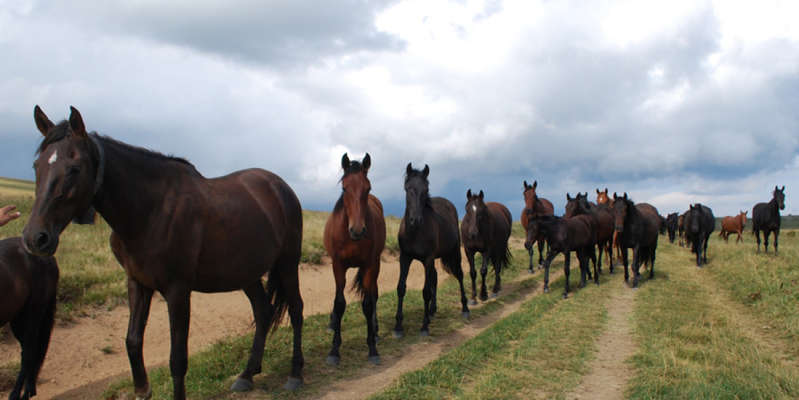
Scientists have definitively identified the origin of domestic horses
Modern horses appeared in the Volga-Don region 4200 years ago. Scientists came to such results as a result of a large international study, in which Russian specialists also took part. The article was published in the journal Nature .
A total of 162 scientists from all over the world took part in the study. They were finally able to finally determine the origin of domestic horses and put an end to this issue. They had to decipher the genomes of 273 ancient animals living in Eurasia and compare them with the DNA of modern equids.
Earlier it was assumed that the centers of the appearance of modern horses could be in Anatolia, Siberia and the Iberian Peninsula. But it turned out that it was in the Volga-Don region that a certain genetic profile spread, which then displaced all populations of wild horses from the Atlantic to Mongolia.
“The study covered the whole of Eurasia, because different territories were studied – applicants for the right to be considered the primary focus of domestication,” said one of the authors of the article, Andrei Epimakhov from South Ural State University.
Only two genes indicated a commonality of species – one is responsible for obedience, the second – for a strong spine, specifies RIA Novosti. The popularity of horses was due to horse riding, they became a valuable commodity, and animals began to be actively bred.
The researchers also noted that the use of horses as a means of transportation provided a dramatic increase in the mobility of the tribes inhabiting the Volga-Don region.
In Western Armenia, archaeologists have discovered a stone tomb with the remains of a horse. The unusual find was dated back to the 4th – 1st centuries BC, that is, it is more than 2000 years old. Studies have shown that it was an adult breeding horse, 17-19 years old. The animal was buried as part of some ancient ritual.
